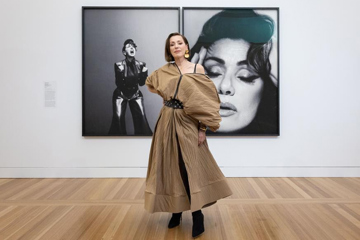Swans Explain Organic Method
Michael Gira speaks candidly about Swans upcoming album, To Be Kind, and their creative process.

Swans’ second career phase, which began in 2010 following a 13-year hiatus, has already been ridiculously productive both artistically and creatively. Their second studio album of this era (and twelfth overall), The Seer, dropped in 2012 to universally ecstatic reviews, and its recently released follow-up To Be Kind has earned similar accolades from punters and pundits alike. While these are undoubtedly intense and epic constructions – both contain roughly two hours of gnarly noise and gothic grooves – it’s certainly not a matter of quantity over quality, for they’re both immaculately crafted and obviously labour-intensive works of art. For Gira, however, it’s always about moving forward.
“I was [happy] the last time I listened to [To Be Kind] which was when I approved the master, and I haven’t listened to it since and don’t plan on listening to it for another ten years,” he muses. “I think it works okay. I have lots of qualms about it of course as an obsessive producer, but I think it conveys something worthwhile. I hope. That’s the best I can say about it! I’m more interested in the next thing – what comes next. In fact our live set at the moment is comprised of half new material, and just a few things from To Be Kind and one thing from The Seer and that’s it.”
Don't miss a beat with our FREE daily newsletter
In between the two opuses Swans released live album Not Here/Not Now (2013) to raise funds for recording, including numerous songs that would eventually emerge on To Be Kind – are they always workshopping new material on tour?
"it’s a nice way to kind of breed material that has real blood in it"
“For now that’s how it’s working, yeah,” Gira explains. “I haven’t really worked that way before, but it’s a nice way to kind of breed material that has real blood in it rather than be conceived abstractly or in the confines of a rehearsal space or something. But it’s worked out well. I don’t know how long that mode will last, but it’s working well for now.”
Naturally the nascent live recordings are significantly different to their eventual recorded counterparts, but Gira explains that even the album renditions are merely snapshots rather than definitive versions of a given track.
“I don’t think there is a definitive one,” he stresses. “I guess the album in a sense is a definitive thing because it’s an album and it’s finished, but the song itself exists in the ether in a way. Often – not always, but often – it will start with an acoustic guitar and myself just singing the basic structure that I’ll just sing and play, and then the next stage is that I’ll bring it to the band in a soundcheck or a rehearsal and we’ll flesh it out together back and forth, and then maybe we’ll play it live for a while and it will change immensely. Then we’ll record it and then we’ll play it more or we’ll just discard it, but it’s always open to reinterpretation. It never has one final moment. It’s more about the process to me; selfishly as the artist involved in this it’s more about the process than the finished thing.”
So when Swans arrived with at Texas studio Sonic Ranch late last year armed with this cache of apparently amorphous songs, did Gira know what he ultimately expected from the album or did he just dive in and see where it took him?
“Both,” he chuckles. “I always know what I want, and then I write down extensive notes on what’s going to happen with each song, and then inevitably – with most of the material – as soon as it’s recorded, or as soon as we get in a studio situation, it changes. A mistake will happen or someone will do something unanticipated, and we’ll follow that route instead. And we usually record way too much material – by that I mean way too many tracks on a song – and then suffer immensely trying to mix the fucking thing.”
Is this process arduous or enjoyable?
“It’s intense suffering and intense joy simultaneously,”
“It’s intense suffering and intense joy simultaneously,” he laughs. “It’s very stressful but I guess it also releases endorphins or something. I love the situation of recording like that and I also love playing live – those two activities to me are basically, aside from being with my children, why I’m on earth.”
Of course this burden of creativity doesn’t all fall on Gira’s sturdy shoulders, his band rife with seasoned and stellar musicians.
“I’m the impresario – the clown master – but they’re always pushing,” he smiles. “And I want them to. I liken it I guess to a filmmaker like John Cassavetes, or some other improvisational filmmaker, where they have a script, but then the actors kind of go somewhere and you let that go, and then you throw away the script and film becomes something else, but you’re always hovering as the ringleader.
“Some of the songs on To Be Kind were developed live. We’d be playing a previously existing song, and there was a lull passage or something and I’d start doing something and people would follow, or the bass player would do something and we’d move somewhere else, and they’d develop as these organically growing… they’re not really songs, I guess they’re sonic experiences. We’d start doing that, and then gradually I’d work out words to them and they’d become their own piece. But it’s always different. That’s the whole point, to be surprised.”







